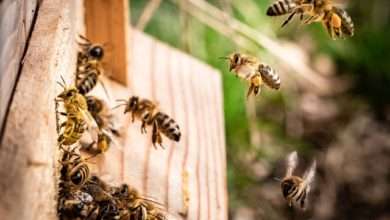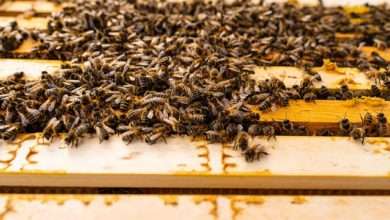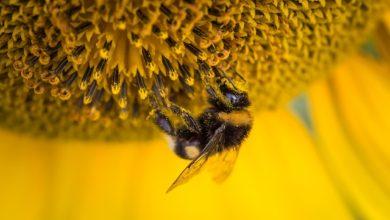How to Safely Install a Swarm of Honeybees: A Step-by-Step Guide
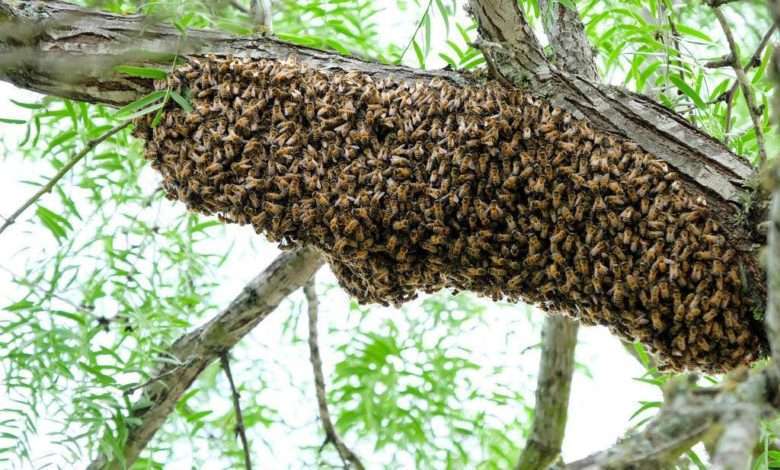
Honeybees play a crucial role in our ecosystem, serving as pollinators for many plants and crops. Installing a swarm of honeybees can be a rewarding experience, but it is important to do so safely and responsibly.
In this article, we will discuss the importance of honeybees, the benefits of installing a swarm, and the potential risks involved, along with safety measures to ensure a successful installation.
Benefits of Installing a Swarm of Honeybees
- Free Bees: Installing a swarm of honeybees can provide beekeepers with a new colony at no cost.
- Pollination: Honeybees are essential pollinators for many fruits, vegetables, and flowers. By installing a swarm of honeybees, you can help enhance the pollination process and increase the yield of your garden or crops.
- Honey Production: Honeybees are known for their ability to produce honey, a delicious and nutritious food source. By installing a swarm, you can potentially harvest your own honey and enjoy the sweet rewards of beekeeping.
- Environmental Benefits: Honeybees play a key role in maintaining biodiversity and ecosystem balance. By installing a swarm, you are supporting the health and vitality of local plant and animal populations.
Potential Risks and Safety Measures
- Allergic Reactions: Some individuals may be allergic to bee stings, so it is important to be cautious when working with honeybees. Always have an epinephrine auto-injector on hand in case of an emergency.
- Protective Gear: When installing a swarm of honeybees, it is essential to wear protective gear, including a beekeeping suit, gloves, and a veil. This will help prevent bee stings and minimize the risk of injury.
- Proper Handling: It is crucial to handle honeybees with care and respect. Avoid sudden movements or loud noises that may agitate the bees, and always move slowly and deliberately when working around the hive.
Preparing for Installation
Before you can safely install a swarm of honeybees, it is essential to properly prepare and take necessary precautions.
- Necessary equipment: To safely install a swarm of honeybees, you will need the right equipment. This includes a deep brood box, honey super and frames for both. Also you’ll need tools such as a hive smoker, hive tool, and bee brush. It is essential to have all the necessary tools on hand before the installation to ensure that you can handle the bees safely and effectively.
- Choosing the right location: Selecting the right location for your hive is crucial for the well-being of your honeybees. Choose a location that is sheltered from harsh weather conditions, receives sunlight for at least part of the day, and is away from areas frequented by humans and animals. Additionally, ensure that there is a source of water nearby for the bees to access.
- Safety gear: Safety should always be a top priority when working with honeybees. Make sure to have appropriate safety gear, such as a beekeeping suit and bee gloves available before installing the swarm. This will help protect you from stings and allow you to work with the bees confidently.
By taking the time to prepare properly for the installation of a swarm of honeybees, you can ensure a successful and safe experience for both you and the bees. In the following chapters, we will cover the step-by-step guide to safely installing a swarm of honeybees on your property.
Capturing the Swarm
Identifying a swarm of honeybees
The first step in capturing a swarm of honeybees is to properly identify them. Unless you are using a swarm trap, the swarm is usually seen hanging from a tree branch or other structure, with thousands of bees gathered together in one place.
Using a bee vacuum or swarm box to capture the bees
There are several methods that can be used to capture a swarm of honeybees, including using a bee vacuum or swarm box. A bee vacuum is a device that gently sucks the bees into a container, while a swarm box is a specially designed box that can be used to collect the bees. Whichever method you choose, it is important to handle the bees with care and avoid causing unnecessary stress or harm to them.

Securing the captured bees for transportation
Once the bees have been captured, it is important to secure them properly for transportation. This may involve placing them in a ventilated container or box to prevent them from escaping during transit. It is also a good idea to keep the bees in a cool, dark place to keep them calm and reduce the risk of them becoming agitated.
Ensuring the queen is safely captured with the swarm
The queen bee is the most important member of the colony, as she is responsible for laying eggs and maintaining the hive. When capturing a swarm of honeybees, it is crucial to ensure that the queen is safely captured along with the rest of the bees. Without the queen, the colony will not be able to survive, so it is essential to take special care to locate and secure her during the capturing process.
Transporting and Setting Up
- Transporting the captured bees to the chosen location: When you have successfully captured a swarm of honeybees, it is important to transport them to their new home carefully. Make sure the bees are securely enclosed in a bee box or hive and that they have plenty of ventilation during transport. Avoid sudden movements or jostling that could disturb the bees and cause them to become agitated.
- Setting up the beehive and frames: Once you arrive at the chosen location for the bees, it is time to set up the beehive and frames. Place the hive in a spot that receives plenty of sunlight and is sheltered from strong winds. Make sure the hive is level and stable to prevent any accidents or disturbances to the bees.
- Providing food and water sources for the bees: Ensure that the bees have access to food and water sources near their new hive. Planting a variety of nectar-rich flowers in the area will provide food for the bees, while setting up a water source such as a shallow dish with rocks for the bees to land on will provide them with the hydration they need.
- Ensuring the hive is protected from predators: Protecting the hive from predators such as bears, raccoons, and skunks is essential to the safety of the bees. Secure the hive with a strong fence or use an electric fence to deter predators from getting too close to the hive.
- Allowing the bees to acclimate to the new environment: Finally, allow the bees some time to acclimate to their new environment before disturbing them further. Give the bees a few days to explore their surroundings and become familiar with their new hive before opening the hive and inspecting the frames.
By carefully following these steps for transporting and setting up a swarm of honeybees, you can ensure the safety and well-being of your new bee colony.
Monitoring and Maintenance
Once you have successfully installed a swarm of honeybees into their new hive, your work as a beekeeper is far from over. It is crucial to regularly monitor and maintain the health of your colony to ensure their survival and productivity.
- Regularly inspecting the hive for signs of disease or stress is one of the most important tasks for a beekeeper. By conducting routine inspections, you can identify any issues early on and take appropriate action to address them. Look for abnormal behavior or unusual patterns in the hive, such as decreased activity, discolored or deformed brood, or dead bees near the entrance.
- Providing supplemental feeding may be necessary if your bees are not able to find enough nectar and pollen in their environment. During times of dearth or when starting a new colony, feeding sugar water or pollen substitutes can help ensure that your bees have enough resources to thrive.
- Requeening may be necessary if your current queen is not performing well or if the colony is showing signs of aggression or low productivity. A new queen can introduce fresh genetics and improve the overall health and productivity of the hive.
- Managing colony size and preventing swarming are essential tasks for beekeepers. Bees may swarm when they feel overcrowded or when resources are scarce. To prevent swarming, make sure your hive has enough space and consider adding supers or conducting a split if the colony is getting too large.
- Troubleshooting common issues, such as pest infestations or queen problems, is part of the job of a beekeeper. Keep an eye out for signs of issues in your hive and take prompt action to address them.
By following these steps for monitoring and maintenance, you can help ensure the health and success of your honeybee colony. Remember that beekeeping is a continuous learning process, and staying attentive to the needs of your bees is key to being a successful beekeeper.
Conclusion
Installing a swarm of honeybees is a rewarding experience that requires careful planning, preparation, and ongoing maintenance. By following the steps outlined in this guide, beekeepers can contribute to the conservation and propagation of honeybee populations while enjoying the numerous benefits of having a thriving honeybee colony.
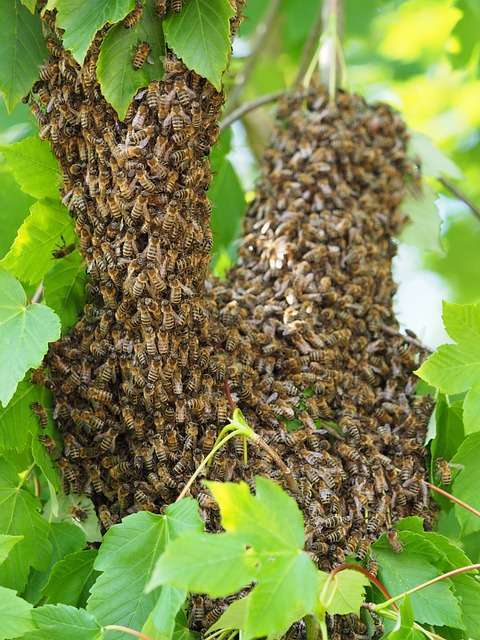
FAQ’s:
What are the benefits of installing a swarm of honeybees?
- Installing a swarm of honeybees can result in increased pollination of crops, production of honey and other hive products, support for local ecosystems, and a deeper connection to nature.
What equipment do I need for installing a swarm of honeybees?
- Necessary equipment includes protective clothing, hive components, tools, and safety gear such as a bee suit, gloves, and veil.
How should I choose the right location for the beehive?
- The right location for the beehive should have access to forage, water, and sunlight while also being away from areas with high human activity.
What should I do to maintain a healthy honeybee colony?
- Regularly inspecting the hive for signs of disease or stress, providing supplemental feeding if needed, requeening if necessary, managing colony size, and preventing swarming are important aspects of maintaining a healthy honeybee colony.


